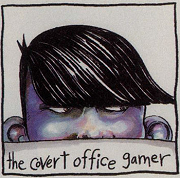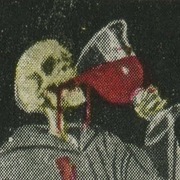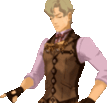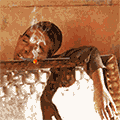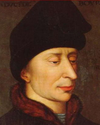|
Weka posted:Sorry I phrased that in a needlessly hostile way. When the Sassanids took over it was in a revolt that seized power from the Parthians who were seen as interlopers. They emphasized the connection to the old Persian monarchy far more than the Parthians ever had and eventually also emphasized strict Zoroastrianism. Those Parthian noble houses continued to wield significant power under the Sassanids and they were important militariliy, but the relationship between them and the Sassanid monarchy was always tense and actual Sassanid control of the northern and eastern regions of the empire appear to have been extremely loose and tenuous. The Parthians were an eastern Iranian tribe, a Scythian people essentially (they began to be referred to as "Parthian" after they took over the Seleucid satrapy by that name), and were not Persian speakers nor strict Zoroastrians. This continued to be the case in the eastern and northern parts of Sassanid Empire, where you had traditional Iranian polytheism alongside Zoroastrianism, Buddhism and Manicheism. The Parthian Empire also used Greek as their administrative language and mixed together Hellenic and Iranian iconography in their coinage for instance. Randarkman fucked around with this message at 17:35 on Jun 2, 2020 |
|
|
|

|
| # ? Apr 26, 2024 00:50 |
|
Re: Hungary and Ottomans. Ottoman Hungary doesn't get much coverage in education books or popular history in Turkey due to how important Vienna was for Ottomans. Belgrade and Greece get more action because they got conquered earlier and Belgrade was a natural border between Europe and Ottoman lands for a while. I have been to both Budin (current day Budapest) and Belgrade and you can clearly see Belgrade was considered a proper Ottoman city with the old city having lots of Ottoman-era structures including the main castle called Kalemegdan (Kalemeydan in Türkish meaning the Field/Courtyard [of the] Castle) and many inns and schools. Hungary was more of a vassal state rather than a fully integrated part like Greece due to how dangerously close it was to Austria and therefore always at risk of getting conquered back. One battle that is always thought in schools was Battle Mohacs during the Suleiman the Magnificent rule which has a baller miniature:  This one is pretty important in terms of how Ottoman military technology was superior to one of the most powerful armies of Europe. The miniature gives away the actual Ottoman battle tactic of that age (you can read Godfrey Godwin's book called Janissaries if you want to go further) but basically a textbook Hammer and Anvil if you ever played any Total War game. -Massed artillery in the center protected with wooden spikes, trenches, and musket armed Janissary elite. -Sipahi cavalry on both sides with Azab and various provincial infantry (it was pretty common to Sipahis get into fights with Janissaries about who was more pimp fueled by the fact that Janissary corps were converted Christians and used "dishonorable" weapons like muskets and cannons while Janissaries claimed that Sipahis are dumdums for not adopting firearms) -Horse archers or akıncı light cavalry in front and flanks to harass and bait the enemy. Hungarian army had massed mounted knights and actually got pretty close to capping Suleiman on the right-wing after a Mount and Bade style charge but Janissarie and Sultans own Solak bodyguards. Sidenote about Solaks: Lefties/Left Handed, almost all of them were left-handed and protected the left side of the sultan's tent. They were forbidden to use gunpowder and had a sword and board with composite bows.
|
|
|
|
Galewolf posted:Re: Hungary and Ottomans. Great post, thanks a lot 
|
|
|
|
Quote not edit
|
|
|
|
The Ottomans were also helped by dissension among the Hungarian ranks. The Dózsa Rebellion, the increase in power for the aristocracy, and the general lack of leadership meant that Louis II's Hungary was no match for the Ottoman state, unlike the powerful Hungarian kingdom under Matthias Corvinus.
|
|
|
|
Yeah, Ottoman intervention is quite a common thing in Balkans and Eastern Europe (and there are multiple instances of getting involved in wars of France) and also some active involvement in Sumatra as Sultante of Aceh's protectorate. Serbia, Romania and Hungary pretty much had their share of what I can describe as: "Ayo, I want this crown but my rivals are more powerful but who is close and powerful enough to help me so my head doesn't end up in a pike?  " "Any Ottoman Sultan:  Which usually either ended up the contender getting his crown and being a vassal that has a brawny executioner with a very sharp axe standing next to him in case he gets some funny ideas about not paying taxes and tributes or the country getting hosed up in a major civil war that simply marching into weakened local feudal lords. I always felt post-fall of Constantinople this was one of the things seeped into the Ottoman court which was deviated from the "holy warriors from the steppes" mentality like a century ago.
|
|
|
|
Also, literal Dracula was involved at some point.
|
|
|
|
Why were things like gunpowder often considered dishonorable? Because its cheating or something? Even though surely metal shot from an arquebus is enough to punch a hole through armor.
|
|
|
|
|
Sandwolf posted:Why were things like gunpowder often considered dishonorable? Because it’s “cheating” or something? Even though surely metal shot from an arquebus is enough to punch a hole through armor. It doesn't require as much skill and training to shoot a gun.
|
|
|
|
Sandwolf posted:Why were things like gunpowder often considered dishonorable? Because its cheating or something? Even though surely metal shot from an arquebus is enough to punch a hole through armor. In this case it's probably mostly because the sipahis/timariots were a traditonal military aristocracy, and these have often regarded advancements in military science (both in terms of techinique and technology) with suspicion particularly if it was not necessarily a direct evolution of the way of war they practice. The Ottoman sipahis* mostly fought as light and heavy cavalry and the Ottoman armies were overwhelmingly based on them. They were far more important than the Janissaries in terms of absolute numbers and they provided that essential cavalry component to the Ottoman field armies, which throughout most of Ottoman history continued to be primarily dominated by cavalry. When it comes to resisting the adoption of new military techniques and technology the Janissaries later on will do that as well to a certain extent. Though the actual reality of "janissary decadence" was much more complicated than is often presented in most histories. *Depending on the author in question "sipahi" may be used to refer to all Ottoman regular cavalry or it might be more specifically applied to the cavalry units of the Sultan's household, the kapıkulu (which had a cavalry, artillery, infantry and administrative component, the Janissaries were the infantry and the most numerous) and exclude the cavalry raised based on the timar fief system (which had a lot in common with Byzantine pronoia and Islamic iqta landgrants in that they were non-hereditary, non-transferable, grants of the tax proceeds of agricultural lands, with which the holder was to derive his salary and arm himself and a number of retainers as cavalrymen). Randarkman fucked around with this message at 18:49 on Jun 2, 2020 |
|
|
|
Gunpowder weapons were great equalizers in a world where a mounted and well-armored knight, Sipahi or Mamluk is overwhelmingly powerful in terms of both battlefield and feudal life. Imagine yourself being a Knight trained from like when you are 10-12, wore the best armor and rode a horse costs a whole towns share of feed and getting a fist-sized hole in your armor by a commoner holding a wooden broom with a hole at the end of it. Many feudal nobles and, unless I'm mistaken, Papacy was against the use of firearms as they made monarchs more powerful since they can front out enough cash and hire mercenaries/commoners to field an army to subdue powerful local lords and barons. I think it went far enough to outright banning and hanging arquebusiers/harkabusers. Sipahis were feudal lords with their own land (timar) which pretty much acted like a local western knight/baron who served to their Sancak Bey (Banner Lord, so you know where that one comes from  ) that had like one to three tuğ (horsehair plume banners) depending on the size of their fief. ) that had like one to three tuğ (horsehair plume banners) depending on the size of their fief. Naturally, they were threatened by the existence of firearms which took away power from them and gave it to local rulers or conquered subjects. Ottoman adaption of firearms was similar to Japan's, there was some resistance but it became a white noise of privileged warrior caste getting shot in the back by farmer boys for being dicklords. Edit: Beaten like a drunkard walking in the streets of Istanbul during Murad IV's reign. Galewolf fucked around with this message at 18:47 on Jun 2, 2020 |
|
|
|
Galewolf posted:Gunpowder weapons were great equalizers in a world where a mounted and well-armored knight, Sipahi or Mamluk is overwhelmingly powerful in terms of both battlefield and feudal life. It wasn't really commoners wielding the weapon in the Ottoman Empire to be fair. Though they were recruited from outside the traditional military elite, the janissaries very much became part of the military elite by way of their military importance and resultant social status. It's very much a similar phenomenon to earlier and concurrent mamluk soldiers, who I always think it's useful to regard as being recruited from slaves rather than being slave soldiers, as their status was really unlike any other slave in their societies and they were by no means servile and had a great deal of pride in their status and typically disdain for non-Mamluks. The way janissaries (well not just them really, this goes for other members of the kapıkulu as well) were recruited is kind of interesting and is pretty well known, and is typically played up a bunch in the national memory of Ottoman rule throughout the Balkans. The devshirme (again in those Balkan memories often known as something like the "blood tax") was a levy of young Christian boys rom the Balkans, mostly from the regions that later would make up Albania and Yugoslavia, as well as northern Greece, southern Bulgaria and Macedonia. Families were required to surrender boys, usually in in their early teens (typically this seems to have been formally restricted to not more than one per family, with families that only had one boy exempted), to be taken to the capital and inducted and inducted into the Sultan's houeshold. Here they would be converted to Islam* and taught Turkish as well as other subjects. The brightest would be trained for administrative service and leadership positions, and broad host of subjects, while those who showed useful skills for the cavalry and artillery were put into those units, the remainder were trained as infantrymen, the janissaries. That said, and why the the trauma of the "blood tax" in many Balkan countries perhaps has been a bit overblown in nationalist histories, the devshirme actually wasn't in effect for as long as you might imagine. It seems that the method of conscripting from the Ottomans Christian subjects was adopted sometime in the 15th century, probably after the conquest of Constantinople. Before that recruits were drawn from Christian boys enslaved in war and in raids against the Ottomans' enemies in the Balkans, and its likely these two methods of recruitment may have overlapped a bit before the devshirme came to fully replace recruiting enslaved captives. However by the mid 17th century the practice was on its way out. One reason was that the possibility of hereditary service had been openened up, as janissaries (who were now allowed to marry and have legal children) were eager to have their sons follow in their career inherit status as military elites. Another seems to be that recruitment from Muslim populations in the Balkans (particualarly from Bosnian and Albanian Muslims) had started to become common, these may have been a mixture of conscripts (maybe even being part of the devshirme system) and volunteers during recruitment campaigns (and they of course would again want their sons to follow them). This process began earlier for the janissaries that were part of garrisons in places such as Egypt, Aleppo and Tripoli, but by 1700 only a very small minority of janissaries on the roster were recruited via the devshirme and was formally abolished during the reign of Ahmed III (1703-1730). *there is an addendum to this and that is that there was a very strong association between the janissary corps (again that is the infantry of the household) and the Bektashi sufi order, which is a Shi'ite adjacent sufi order closely related in some of their beliefs and practices to the Turkish Alevis and the Alawites of Syria. Today many Muslims in the Balkans particularly in regions where the Ottomans recruited heavily such as Albania, Bulgaria and Macedonia identify as Bektashi, though Bosnian Muslims are a bit of an exception to this. Randarkman fucked around with this message at 19:38 on Jun 2, 2020 |
|
|
|
UnfurledSails posted:It doesn't require as much skill and training to shoot a gun. Yeah the crossbows caused similar meltdowns in Europe since a peasant with a few weeks of training could injure or kill a knight who spent 18+ years training as a warrior. Gunpowder was even worse in this respect since one firearms become more reliable they could easily punch through just about any type of armor at close range.
|
|
|
|
Wasn't the Empire on the cusp of retaking Western Europe and bringing back the Roman Empire's true form but the Black Plague prevented that?
|
|
|
|
punk rebel ecks posted:Wasn't the Empire on the cusp of retaking Western Europe and bringing back the Roman Empire's true form but the Black Plague prevented that? Solid possibility. Things could have looked very different today, as far as the default religions of a few regions, because of how much of a gamechanger the Black Plague was.
|
|
|
|
Galewolf posted:Gunpowder weapons were great equalizers in a world where a mounted and well-armored knight, Sipahi or Mamluk is overwhelmingly powerful in terms of both battlefield and feudal life. Japan iirc went back and forth on it; for a while, they were absolutely crazy about guns and produced some of the finest rifles in the world. Makes some sense- the traditional weapon of the Samurai was the bow, swords being mostly a status symbol. Mind you, I mostly know Janissaries from Age of Empires II, where they're the Turks' unique unit and a more powerful version of the Hand Cannoneer- for the unfamiliar, AoEII goes roughly from the Dark Ages up to the very early days of gunpowder warfare. I'm not sure how much history supports this, but I feel like there's some logic to a professional warrior caste being eager early adopters of the most advanced weapons of the times- a bit more like a modern professional army than the feudal knights and levies of the time. The above two points also remind me that historical progress isn't like a video game tech tree- societies go back and forth on what technologies, weapons and tactics they use depending on a wide variety of reasons, including culture, governmental decrees, whether they have the infrastructure to support them, and so on. The Romans come to mind, as their legions, with specialists, engineering corps and standardised equipment and tactics, more resemble a modern professional army than most military organisations for the next two thousand years are known for. (Though I'm probably wrong on this)
|
|
|
|
Sociologist Charles Perrow makes an interesting point about the Ottoman empire during its heyday As theorized by Weber, historically, organizations have become increasingly efficient by being transformed into the ideal of the bureaucracy. That may read odd today, but compare a loose, nepotistic monarchy with a professionalized state and you get the point. Indeed in many areas of life (companies, state etc.), the evolution towards bureaucracy was an important factor for gigantic increases in efficiency. Anyway, the Ottomans were the forerunners in that regard, at least in Europe and the Near East. The Janissaries being a standing army is one example, but another is that the administration was ran by Eunuchs. Eunuchs are the archetype of the 'professional', because they can be arbitrarily skilled, powerful and able in all areas, except in the one that is the singular purpose of the organization of "monarchy": Produce heirs and secure their position. If you think through all the implications, then having Eunuchs run much of the details the state was an ingenious move. Janissaries, on a smaller scale, were also the first professional soldiers, not just as standing army, but how their ability and incentives relates to the interest of the state. This may be one reason for the relative stability and success of the Ottoman empire compared to the feuding empires of Europe. The loss of the "professionalism" (in the above sense) is also a reason as to why the Janissaries ended up as a liability. Haramstufe Rot fucked around with this message at 15:00 on Jun 3, 2020 |
|
|
|
this thread is a good thread by the way
|
|
|
|
Haramstufe Rot posted:Eunuchs are the archetype of the 'professional', because they can be arbitrarily skilled, powerful and able in all areas, except in the one that is the singular purpose of the organization of "monarchy": Produce heirs and secure their position. If you think through all the implications, then having Eunuchs run much of the details the state was an ingenious move. Eunuchs mostly just ran (and guarded) the harem, alongside the senior women of the harem. There were times when eunuchs wielded great power, typically when yiou had an under-age sultan, the same periods when you had women exercize alot of power. Most of the professional administrators of the Ottoman Empire were drawn from the same source as the janissaries, like I described in my post above, and they were not eunuchs. Ghost Leviathan posted:Mind you, I mostly know Janissaries from Age of Empires II, where they're the Turks' unique unit and a more powerful version of the Hand Cannoneer- for the unfamiliar, AoEII goes roughly from the Dark Ages up to the very early days of gunpowder warfare. I'm not sure how much history supports this, but I feel like there's some logic to a professional warrior caste being eager early adopters of the most advanced weapons of the times- a bit more like a modern professional army than the feudal knights and levies of the time. Janissaries were originally armed with bows (and crossbows occasionally), but began adopting muskets from the middle of the 15th century. They were in fact still using bows in significant numbers alongside muskets, particularly for marine combat, a hundred years later. Bows continued to be prominent ceremonial weapons markers of rank (alongside maces, cooking pots and kitchen utensils which were the most prominent symbolic objects of the janissary corps).
|
|
|
|
Randarkman posted:Eunuchs mostly just ran (and guarded) the harem, alongside the senior women of the harem. There were times when eunuchs wielded great power, typically when yiou had an under-age sultan, the same periods when you had women exercize alot of power. That's understating it, though. While Eunuchs were rarely statesmen, they did run the administration of the palace - much more than just the harem, including the spy network. Because of the setup/centralization/professionalism of the Ottoman state, this was very important and makes the point entirely valid. It is also because of this that the power of both professional classes expanded - they were very effective. E.g. from wiki on head Eunuch "Established in 1574, the post ranked among the most important in the Ottoman Empire until the early 19th century, especially after the stewardship of the two holy cities of Mecca and Medina and the supervision of all charitable foundations (vakifs) in the Empire came under his purview. The wealth thus amassed, the proximity to the sultan, and the role the harem ladies played in court intrigues meant that its occupant had considerable political influence"
|
|
|
|
Haramstufe Rot posted:That's understating it, though. While Eunuchs were rarely statesmen, they did run the administration of the palace - much more than just the harem, including the spy network. Because of the setup/centralization/professionalism of the Ottoman state, this was very important and makes the point entirely valid. It is also because of this that the power of both professional classes expanded - they were very effective. E.g. from wiki on head Eunuch Alright, I'll have to concede that. I'm probably blindsided by thinking mostly of the viziers, military officials and regional governors (before those became associated more and more with local dynasts). Thanks for the correction. The vakif (typically called "waqf" when dealing with the Arab world) supervision especially is significant here, though that's also a phenomenon which in pre-modern Islamic societies resulted in alot of potentially taxable enterprises falling outside of state control. Because the thing was that the rules on what a vakif was and how one could be set up and for what purpose became very vague over time, a typical example could be that a wealthy man in his will sets aside some of his properties as a vakif with the profits from these to be used to support his descendants in perpetuity. Revising or just straight up confiscating vakifs therefore often became a priority for modernizing Islamic states as it was absolutely necessary in order to establish a solid base of tax revenue. This often brought those states into conflict with the religious establishment as well as the other propertied classes who had benefited from this arrangement. Randarkman fucked around with this message at 15:29 on Jun 3, 2020 |
|
|
|
What do we know about the harem itself, like i wanna hear some tidbits on that
|
|
|
|
Yeah like could I have pretended to be a eunuch to sneak in and then all the concubines mysteriously become pregnant, wow that old sultan certainly is fertile  Then the sultan dies in his sleep of old age, because I'm not a monster, and I become the new 'eunuch' sultan, my first edict being the invention of video games. Then the sultan dies in his sleep of old age, because I'm not a monster, and I become the new 'eunuch' sultan, my first edict being the invention of video games.I am off to write my orientalist fan fiction that will be the newest Internet smash hit
|
|
|
|
Re: Gunpowder and Janissaries. There are some accounts that Janissaries used handguns starting from their early years but as Randarkman said, mid 15th Century is a good point to start. What most non-Paradox games don't take into account is the logistics that made massed artillery and musket Janissary center work so well. Ottoman army had a massive network of gunpowder factories in key cities all around the empire like Belgrade, Budin, Gallipoli, Aleppo, Smyrna, Salonika and many smaller ones all around like Ankyra and Diyarbakir. There was a massive cannon foundry arsenal found by Mehmet II has its own district in Istanbul called "Tophane" (House of Cannon[s] which is probably one of my favorite places in the city), the engineering corps had talented engineers with massive amounts of money and resources funneled to them (Sinan the Architect was an army engineer and learned his trade in the Janissary corps. His student Mehmed Aga was also a Janissary cadet before building the Blue Mosque and his other masterpieces), the "sappers house" (humbaracı ocağı) was also quite important (you'll notice a lot of sieges ending with "then the sappers managed to blow a hole in the city walls"). Sanitation and food supply were also considered extremely important, Janissaries were technically self-reliant and pretty spartan when it comes to rations (like bread, kavurma [fried and salted meat from lamb or beef], hoşaf (fruits served in cold sweetened water) and assorted nuts) despite being quite rich as being paid very handsomely/called dibs on spoils. Many European observers mention how Ottoman army camps were highly disciplined and devoid of diseases that plagued (heh-heh) the Western armies of that age. So it's a combination of many factors culminating into having an up and running core of career soldiers with nearly unbreakable morale, best equipment and technology along with the reputation they have as an "unbeatable" force. Re: Eunuchs That's a strange take because eunuchs were more of an orientalist motif than an actual influence on Ottoman politics. Instead of Eunuchs, it was the earlier form of European style "meritocracy" of converted Christians (mainly from Balkans, Greece, and Bulgaria) where you start with no rights and may end up being more powerful than the sultan you're serving for. Enderun (the military/state academy) got the best converts that are not physically fit for being Janissaries or showed promise in non-combat skills which then taught in wide topics such as languages, astronomy, geometry alongside with religious studies. It's possible to become a high ranking official or a vizier through your merits and education and this worked for Ottoman sultans well because they didn't have to worry about having a strong "native" aristocracy to challenge them. Eunuchs were mainly employed in the harem and I'm trying hard to remember a significant vizier that came from eunuchs. I think the Ukrainian concubine of Suleiman, Roxelane, had one eunuch as her advisor which I think got executed for something but it's a bit fuzzy. Galewolf fucked around with this message at 15:50 on Jun 3, 2020 |
|
|
|
Thinking really hard about the House Of Cannon[s] right now
|
|
|
|
Re: Harem That is a subject I'm woefully ignorant but read couple of articles here and there about how things were in reality. The orientalists loved the harem, therefore, modern cultures idea of a harem got influenced by that including how Turks see the harem. It's quite an interesting topic to read and, by the nature of it, woven with mysteries and rife with hearsay. The harem section of Topkapı palace was under renovation for a long time and I have never been able to see that despite seeing the palace like five or six times.
|
|
|
|
OK but do you have more juicy details, like would the sultan order the girls to form a quadruple sandwich around him, were there sultans who spent all day every day at the harem, coming back and forgetting to do any ruling, etc.
|
|
|
|
Phlegmish posted:OK but do you have more juicy details, like would the sultan order the girls to form a quadruple sandwich around him, were there sultans who spent all day every day at the harem, coming back and forgetting to do any ruling, etc. There were sultans (and other members of the Ottoman dynasty) who spent their entire lives in the harem, not always completely by choice. There were several times in its history when the Ottoman Empire provided a pretty good lesson of what happens when you invest a 20-30 year old man with no experience of the real world with (theoretically) absolute power.
|
|
|
|
Messenger: Sultan we lost our entire army against the Moldavians/Persians/Portuguese Sultan [in middle of pile of nubile concubines]: Go away can't you see I'm busy 
|
|
|
|
I think Sultan Suleiman quite enjoyed the harem and many "historians" (emphasis on airquotes) claimed that his concubine Roxelane started the decline of Ottoman empire because she caused the murder of Ibrahim (there is a novel written in 60's described that moment as "Suleiman wanted to stop the order he gave but Roxelanes pussy game was so strong and they made love while Ibrahim's blood stained the next door"), pushed the legitimate heirs from his Turkish wife and eventually caused the murder of the Mustafa, his heir apparent and the most promising son after a bloody uprising. Irony is, Roxelane's (Hurrem Sultan for us) two sons ended up fighting each other for the throne and the better one, Bayezid had to escape to Iran where he allegedly got some ideas about overthrowing Shah Tasmahb but eventually got sold back to Suleiman and murdered with all his sons and family by the emissaries of Selim. This left only Selim as legitimate heir and that is considered the point of start of the decline but actual historian explain that the empire was straining under overexpansion and splendour of the Suleiman already and West gaining technological and military advantage. Selim actually had some victories and gained some land but of course, was a drunk and possibly a hashish addict hence the name "Selim the Drunkard" or "Selim the Yellow" (due to his sickly nature). Suleiman had like 8 children before Roxelane and god knows how many hidden in the corners of harem because clearly his sultani cannon was working well iykwim 
Galewolf fucked around with this message at 16:30 on Jun 3, 2020 |
|
|
|
That Roxelane must have been one bombshell. The rear end that launched a thousand ships.
|
|
|
|
I watched all of A Magnificent Century with my Turkish wife so I daresay I am one of the most accomplished experts on the matter of Harem. Harem in the West: Have 100 exotic girls and bang them in a massive orgy Harem in actuality: Have 100 slaves who spend their entire day fighting and scheming and bickering to improve their lot, all while those who already bore a child become more and more jealous and possessive. Every interaction has strict rules. No fun for you! Then your mother tells you who to bang every night.
|
|
|
|
You know what, I'll take it
|
|
|
|
If you want to read a graphic novel about harem, "Veils" is quite good and drawn by the amazing Rebecca Guay (one of my favorite illustrators, did lots of MTG artwork in the 90's and 00's) along with some photo-like pages. It's shockingly accurate/well researched and the artwork by Guay is just amazing. The Cover:  One of the earlier pages: 
|
|
|
|
Just how 'graphic' is it?  Alright, I'll stop being such a horndog. The fact that people point to Roxelane as the start of the decline is interesting, the Ottomans continued to be a major player for long after that. If I had to pick a turning point, it would probably be the second siege of Vienna in 1683.
|
|
|
|
Phlegmish posted:Just how 'graphic' is it? For your thirst, let me just mention that Muhteşem Yüzyıl: Kösem, which plays in the Harem, is available on youtube with english subtitles. While it's probably not very good, and like any Turkish show, has a hundred episodes each of which is almost three hours long, it DOES feature actual, literal bombshell Beren Saat. Depending on where you stand, might be worth it. edit: ep1 is here https://www.youtube.com/watch?v=iljpQO4I40E Be aware that Turkish television includes _extreme_ amounts of staring, slow motion, and staring in slow motion. Edit2: No seriously, what's great about these shows are the sets and the costumes imo. Often they are filming in the actual palace/harem. Oh and also of course Beren Saat *sighs*longing, Turkish-TV look toward the stars* Haramstufe Rot fucked around with this message at 17:13 on Jun 3, 2020 |
|
|
|
Phlegmish posted:Just how 'graphic' is it? It's quite "tasteful" but also don't shy away from some sweet, sweet eunuch action. Yeah, the thing about Roxelane/Hurrem is more about the long and honored Turkish tradition of blaming everything bad happening on someone else, preferably Westerners. This is from the same history books claimed that the fall of Gokturk and Hun empires because Chinese sent hot sexy princesses and how they divided the empire (I poo poo you not this was an actual history thought in the 80's and 90's. I don't know about the recent curriculum which had like many, many revisions, though).
|
|
|
|
To be fair empires crumbling because the dude on the throne thought more with his dick than with his head is a perfectly apt explanation for historical downfalls that more people will probably be interested in for obvious reasons instead of very poorly managed militaries/taxes/alliances
|
|
|
|
Muhteşem Yuzyıl is, for the uninitiated, a Turkish TV show got super famous in many, many countries (including Russia, Ukraine, Balkans and...uh...South America) and pretty much locked down the primetime for 5 odd years. While it's budget was not nearly enough to compare with Holywood, it was probably the most expensive production in here and the actors were all good Turkish speaking actors. I find Beren Saat a bit ice queen-ish for while the actress playing Hurrem ticks more boxes for me  The show had like atrociously long episodes with a sizeable amount of actual stuff happening. They have armors and clothing borrowed from the Topkapı palace and, of course, almost all palace scenes were actually shot in place (benefits of actually having the palaces within reach). The westerner costumes are, of course, hilariously but that can't be helped. The Mohacs Battle scene from the show, complete with bad CGI and LARP costumes and armor (the main actors wear some of the actual pieces, afaik): https://www.youtube.com/watch?v=vXXzGEDlw8E No Chinese kung-fu masters or caveman fighting for Hungarians, much to my dismay.
|
|
|
|

|
| # ? Apr 26, 2024 00:50 |
|
Galewolf posted:Muhteşem Yuzyıl is, for the uninitiated, a Turkish TV show got super famous in many, many countries (including Russia, Ukraine, Balkans and...uh...South America) and pretty much locked down the primetime for 5 odd years. Above I linked to the sequel about the grandson of Süleyman. The original show, centered on Süleyman, includes of course a lot of conquest, with hillarious Western costumes, Turkish accent Italian speaking and fight scenes where one heroic Turk kills hundreds of Hungarians with cut of his sword. And it doesn't even have Beren Saat, since she is in the sequel. Galewolf posted:
Turkish men often prefer average looking West-Europeans which is entirely incomprehensible to me. You have the best women right there in your god drat country what are you doing. Also some guys if that's your thing. Haramstufe Rot fucked around with this message at 17:22 on Jun 3, 2020 |
|
|








